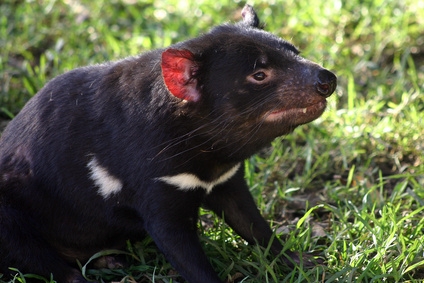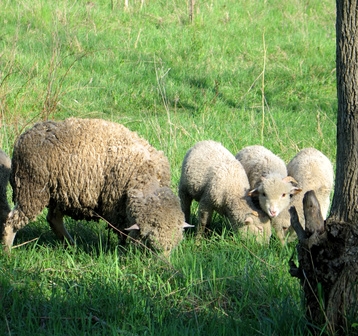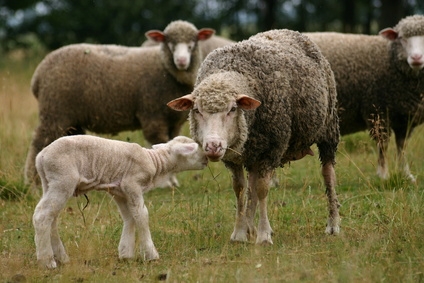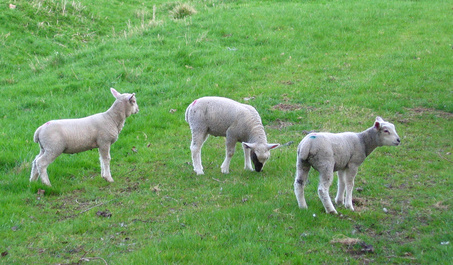
Why the Tasmanian Devil Is Endangered. The Tasmanian devil is a small, odd-looking marsupial native to the Australian state of Tasmania. It was classified by the Tasmanian government as being endangered in 2008. Several factors are responsible for the Tasmanian devil's current endangered status, and the animal faces a very real and sad possibility of extinction in the next two centuries, according to David Llewellyn, Tasmania's Primary Industries Minister in a National Geographic Article.

In the 1990s, there were about 150,000 Tasmanian devils in the wild, according to the same National Geographic article. By the end of 2006, that number had fallen to just between 20,000 and 50,000. Tasmanian devil populations have been on the decline for some time, resulting in the government's previous classification of them as vulnerable.
One early reason for the Tasmanian devil's population decline was extermination by farmers, who believed that devils were eating their livestock and poultry. However, while devils are carnivores, they feed mainly on carrion and carcasses, and very small birds, reptiles and insects. In fact, it was later discovered that by eating carcasses of dead animals on farmers' properties---and thus reducing the presence of maggots---the devils reduced the likelihood of blowfly disease in sheep. This disease happens when maggots from bowflies hatch on sheep and burrow into the wool, causing skin damage and open wounds.
The population of Tasmanian devils began decreasing at a dramatically faster rate due to a fatal epidemic of devil facial tumor disease. The condition is one of two cancers known to spread like an infection. It can be transmitted through bite and results in the formation of large tumors on the face and neck of infected animals. These tumors make it impossible for them to eat, so many die of sheer starvation. By 2008, the disease was thought to have spread to more than 60 percent of Tasmania, with no visible signs of recovery. No one knows what is causing the disease.
If these animals become extinct, many other species could follow. That's because other alien predators such as foxes and feral cats would move in and propagate, killing animals such as lizards and ground-dwelling birds to extinction, according to Ray Nias, who heads the World Wildlife Fund-Australia's conservation program, during a National Geographic interview.
Conservationists are watching a small colony of devils in the country's northwest region, where the disease has yet to spread, and hoping that these devils will ensure the species' survival. Meanwhile, others are capturing devils and sending them to zoos and sanctuaries to create captive-breeding programs.
 Herbicide Safety for Grazing Animals
Herbicide Safety for Grazing Animals
H
Herbicide Safety for Grazing Animals
Herbicide Safety for Grazing Animals
H
 Sheltie Facts
Sheltie Facts
Sheltie Facts. "She
Sheltie Facts
Sheltie Facts
Sheltie Facts. "She
 How to Bottle Feed Baby Lambs
How to Bottle Feed Baby Lambs
How to B
How to Bottle Feed Baby Lambs
How to Bottle Feed Baby Lambs
How to B
 How Can I Make Money With Farm Livestock?
How Can I Make Money With Farm Livestock?
How Can I Make Money With Farm Livestock?
How Can I Make Money With Farm Livestock?
 Ways to Keep Your Border Collie Busy
Ways to Keep Your Border Collie Busy
W
Ways to Keep Your Border Collie Busy
Ways to Keep Your Border Collie Busy
W
Copyright © 2005-2016 Pet Information All Rights Reserved
Contact us: www162date@outlook.com